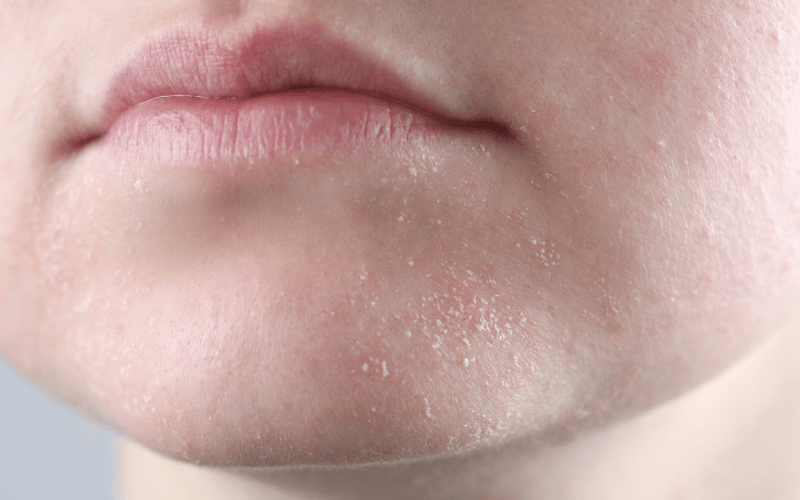Symptom 10: Dry Skin and Mouth

Dry skin and mouth in diabetic ketoacidosis primarily result from the significant dehydration that accompanies this condition. DKA often leads to a loss of fluids through excessive urination and, in some cases, vomiting, which can dehydrate the body and reduce the moisture in the skin and mucous membranes of the mouth.
The severity of dehydration can vary in DKA, but even mild dehydration can cause noticeable dryness of the skin and mouth. As dehydration worsens, these symptoms become more pronounced, leading to discomfort and potential complications such as cracking of the skin or sores in the mouth.
Dry skin and a dry mouth are not just uncomfortable – they can also be signs of the body’s struggle to maintain fluid balance. The dryness can lead to itching and irritation of the skin, and in the mouth, it can cause difficulty swallowing, speaking, and an increased risk of dental problems.
While dry skin and mouth can have various causes, in the context of diabetes, particularly when accompanied by other symptoms of DKA, they should be taken seriously. It’s a sign that the body is losing fluids at a rate that needs to be addressed to avoid further complications.
Addressing dry skin and mouth involves treating the underlying cause – the dehydration associated with DKA. This typically includes rehydration, either orally or intravenously, depending on the severity. Alongside medical treatment, personal care measures like using moisturizers for dry skin and keeping the mouth hydrated with frequent sips of water can provide relief. It’s important to monitor these symptoms as part of the overall management of DKA, as improvements in hydration status can be indicative of recovery from the acute phase of the condition. (10)